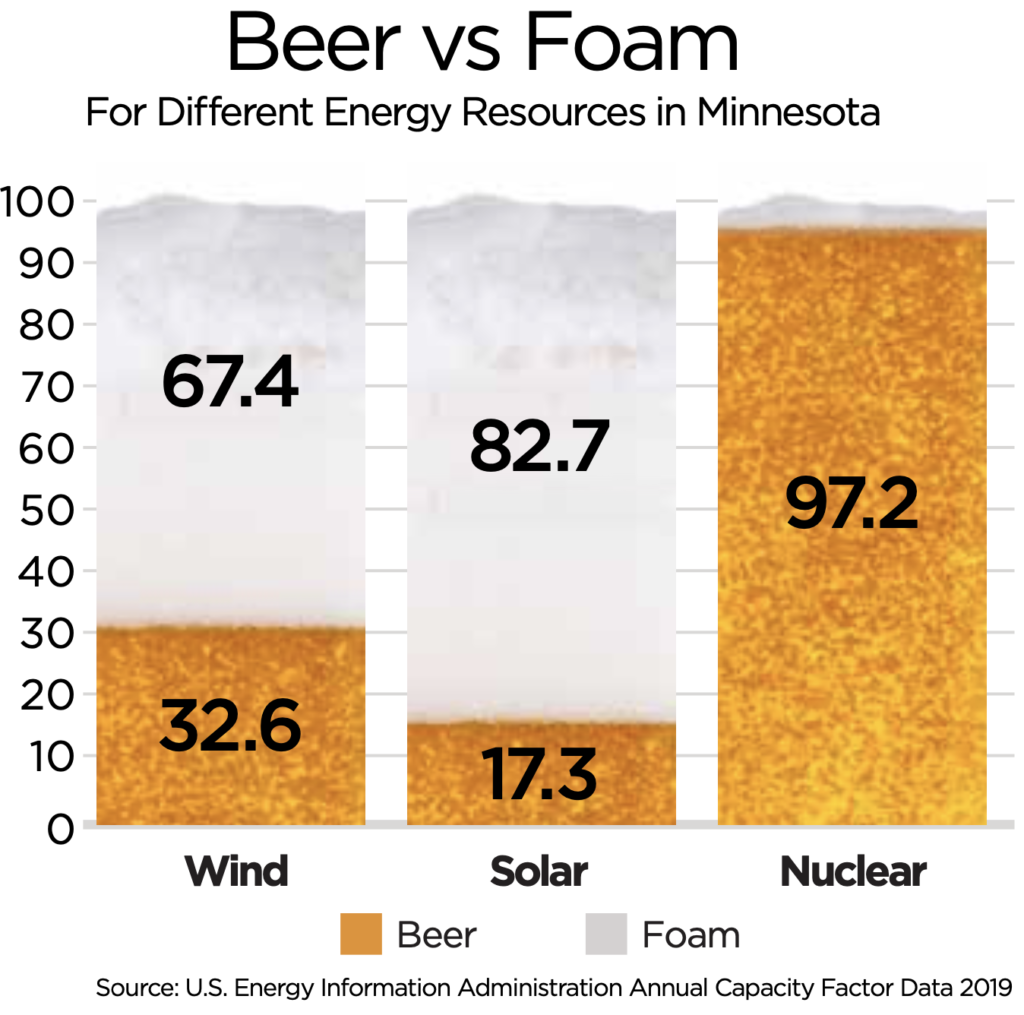Where’s the beer?
What can a bad beer pour teach us about energy policy? A lot, actually.
Minnesota’s Democrat Senator Tina Smith has been a leading proponent of the Clean Electricity Performance Program (CEPP) in Congress, which would force electricity companies to build more wind turbines and solar panels every year or face stiff penalties.
Unfortunately, Smith’s preferred energy sources are a lot like her recent beer pour, which you can see in the accompanying photo. U.S. Energy Information Administration (EIA) data show wind turbines and solar panels don’t work very often in Minnesota. In other words, they are much more foam than beer.
The graph shows the “capacity factor” of different energy resources in Minnesota in 2019. Capacity factor is industry lingo for the measurement of how much electricity a power plant produces compared to its potential output. In this case, the glass is the potential output, and the beer is the electricity produced.

Data from the EIA show that wind produced only 32.6 percent of its potential output in 2019 (meaning it was 32.6 percent beer and 67.4 percent foam), solar produced 17.3 percent of its potential output (17.3 percent beer, 82.7 percent foam), and nuclear produced 97.2 percent of its potential output (97.2 percent beer, 2.8 percent foam).
On the electric grid, the foam represents a wasted opportunity to generate electricity. This drives up the cost of electricity while adding nothing to the reliability of the system. The foam in Smith’s glass represents a wasted opportunity to enjoy a delicious beverage.
Unfortunately, Smith’s preferred energy sources are all foam and no beer.
Rather than pushing the CEPP, Smith might read two new studies by American Experiment that found the CEPP would impose an additional $1,200 per year cost on families in Arizona and West Virginia.
Senator Smith should urge her DFL colleagues in Minnesota to legalize the construction of new nuclear power plants in the state. Only then can she have a reliably good pour of electricity that doesn’t emit carbon dioxide.